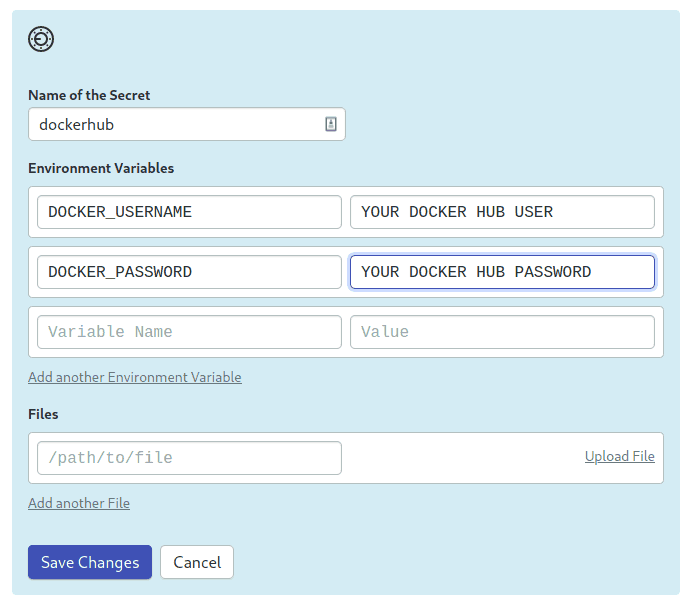- Docker Gem Install Sass
- Docker Gem Install Rmagick
- Docker Ruby Gem Install
- Docker Gem Install Mysql2
- Docker Gem Install Proxy
Ruby is a dynamic, reflective, object-oriented, general-purpose, open-source programming language. This example repository runs two Docker containers built from the same image: a Sinatra application; the Sinatra application test suite; After specifying in the.travis.yml to use Docker (with services: - docker) and Ruby (with language: ruby), the beforeinstall build step pulls a Docker image from carlad/sinatra then runs.
Gems are for ruby devs. The expertise you need is a ruby dev who also uses docker. When I was programming in Ruby around 2011, most ruby setups used rvm and bundler to handle dependencies.
Developing with docker under OSX/ Windows is a huge pain, since sharing your code into containers will slow down the code-execution about 60 times (depends on the solution). Testing and working with a lot of the alternatives made us pick the best of those for each platform, and combine this in one single tool: docker-sync
docker-sync is:
- Support for OSX, Windows, Linux and FreeBSD
- Runs on Docker for Mac, Docker for Windows and Docker Toolbox
- Uses either native_osx, unison or rsync as possible strategies. The container performance is not influenced at all, see performance
- Very efficient due to the native_osx concept
- Without any dependencies on OSX when using (native_osx)
- Backgrounds as a daemon
- Supports multiple sync-end points and multiple projects at the same time
- Supports user-remapping on sync to avoid permission problems on the container
- Can be used with your docker-compose way or the integrated docker-compose way to start the stack and sync at the same time with one command
- Using overlays to keep your production docker-compose.yml untouched an portable
- Supports Linux* to use the same toolchain across all platforms, but maps on a native mount in linux (no sync)
Besides performance being the first priority for docker-sync, the second is, not forcing you into using a specific docker solution. Use docker-for-mac, docker toolbox, VirtualBox, VMware Fusion or Parallels, xhyve or whatever!
Documentation, Installation, Configuration

All the information, tutorials and best practises are provided in the Documentation
Estimated reading time: 8 minutes

This Quickstart guide shows you how to use Docker Compose to set up and runa Rails/PostgreSQL app. Before starting, install Compose.
Define the project
Start by setting up the files needed to build the app. Ubuntu 14 install docker. The app will run inside aDocker container containing its dependencies. Defining dependencies is done usinga file called Dockerfile. To begin with, the Dockerfile consists of:
That’ll put your application code inside an image that builds a containerwith Ruby, Bundler and all your dependencies inside it. For more information onhow to write Dockerfiles, see the Docker user guideand the Dockerfile reference.
Next, create a bootstrap Gemfile which just loads Rails. It’ll be overwrittenin a moment by rails new.
Create an empty Gemfile.lock to build our Dockerfile.
Next, provide an entrypoint script to fix a Rails-specific issue thatprevents the server from restarting when a certain server.pid file pre-exists.This script will be executed every time the container gets started.entrypoint.sh consists of:

Docker Gem Install Sass
Finally, docker-compose.yml is where the magic happens. This file describesthe services that comprise your app (a database and a web app), how to get eachone’s Docker image (the database just runs on a pre-made PostgreSQL image, andthe web app is built from the current directory), and the configuration neededto link them together and expose the web app’s port.
Tip
You can use either a .yml or .yaml extension for this file.
Build the project
With those files in place, you can now generate the Rails skeleton appusing docker-compose run:
First, Compose builds the image for the web service using the Dockerfile.The --no-deps tells Compose not to start linked services. Then it runsrails new inside a new container, using that image. Once it’s done, youshould have generated a fresh app.
List the files.
If you are running Docker on Linux, the files rails new created are owned byroot. This happens because the container runs as the root user. If this is thecase, change the ownership of the new files.
Keka download. Download 7Zip for Windows.exe (32 bit).exe (64 bit) Supported on Windows 10, 8, 7, Vista and XP. Download 7Zip for Other OS p7Zip – Debian and Ubuntu. Download p7zip for Linux (Posix) (x86 binaries and source code): p7zip at SourceForge p7zip is the command line version of 7-Zip for Linux / Unix, made by an independent developer. Keka Download and Install for your computer - either Windows PC 10, 8 or 7 and macOS 10 X, 32/64-bit processor, we have you covered.
If you are running Docker on Mac or Windows, you should already have ownershipof all files, including those generated by rails new.
Now that you’ve got a new Gemfile, you need to build the image again. (This, andchanges to the Gemfile or the Dockerfile, should be the only times you’ll needto rebuild.)
Docker Gem Install Rmagick
Connect the database
The app is now bootable, but you’re not quite there yet. By default, Railsexpects a database to be running on localhost - so you need to point it at thedb container instead. You also need to change the database and username toalign with the defaults set by the postgres image.
Replace the contents of config/database.yml with the following:
You can now boot the app with docker-compose up:
If all’s well, you should see some PostgreSQL output.
Finally, you need to create the database. In another terminal, run:

Here is an example of the output from that command:
View the Rails welcome page!
Docker Ruby Gem Install
That’s it. Your app should now be running on port 3000 on your Docker daemon.
On Docker Desktop for Mac and Docker Desktop for Windows, go to http://localhost:3000 on a webbrowser to see the Rails Welcome.
Docker Gem Install Mysql2
Stop the application
To stop the application, run docker-compose down inyour project directory. You can use the same terminal window in which youstarted the database, or another one where you have access to a command prompt.This is a clean way to stop the application.

Restart the application
To restart the application run docker-compose up in the project directory.
Rebuild the application
If you make changes to the Gemfile or the Compose file to try out some differentconfigurations, you need to rebuild. Some changes require onlydocker-compose up --build, but a full rebuild requires a re-run ofdocker-compose run web bundle install to sync changes in the Gemfile.lock tothe host, followed by docker-compose up --build.
Here is an example of the first case, where a full rebuild is not necessary.Suppose you simply want to change the exposed port on the local host from 3000in our first example to 3001. Make the change to the Compose file to exposeport 3000 on the container through a new port, 3001, on the host, and savethe changes:
Now, rebuild and restart the app with docker-compose up --build.
Inside the container, your app is running on the same port as before 3000, butthe Rails Welcome is now available on http://localhost:3001 on your localhost.
More Compose documentation
Docker Gem Install Proxy
documentation, docs, docker, compose, orchestration, containers